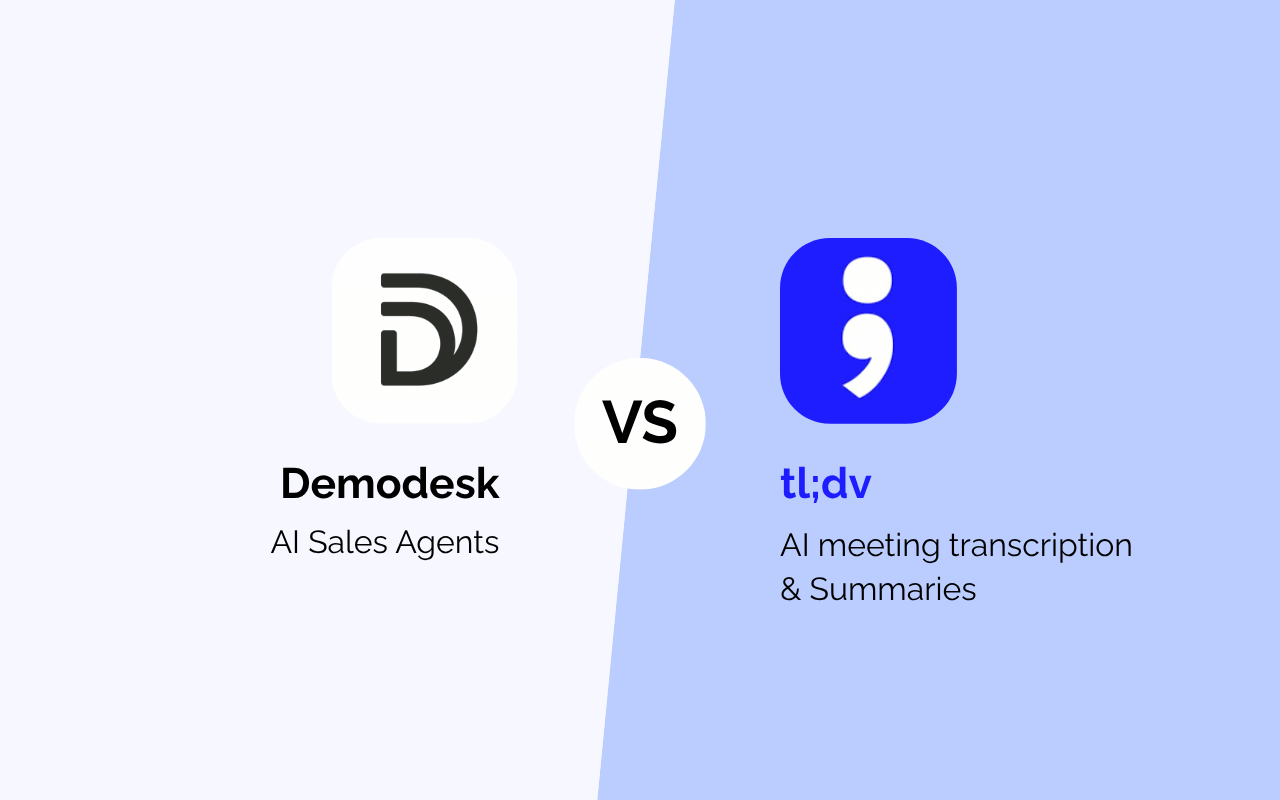Following up with your prospects after a product sales demo is a no-brainer, right? When remote work comes into play, having a well-designed sales follow-up email is imperative to really connect with your lead and help them through the sales funnel. However, there is a difference between sending a quick recap email versus sending a thorough sales follow-up email that reinforces the value of your solution and gives your prospects the necessary information to keep the positive momentum.
Good sales follow-up emails require a well-planned strategy. Remember, every prospect interaction during the sales process is an opportunity to push the sale ahead. Although, being empathetic to every lead’s situation is essential when building a relationship with them. When you write your sales follow-up email, you are not only reminding them of what’s next, but you are guiding them to take action.
This article is designed specifically to help you master the art of writing a sales product demo follow-up email so you can maximize the momentum generated in the demo and take another step towards a deal. You could make the argument that the follow-up process is even more vital for remote inside sales reps.

Why are sales follow-up emails important
Following up with your prospect after a sales call or meeting is the glue that keeps the entire sale intact. Studies have shown that 80% of sales require at least five follow-ups after the first conversation to be successful, yet too many sales professionals give up after just one try.
Why do they give up? Usually, it’s because they view sales follow-up emails as another opportunity for the sales pitch rather than using it as a sales catalyst. The purpose of sales follow-up emails is to reinforce the positive steps that have already taken place and get the prospects ready for what’s next.
When you get to the product demo, the sale has matured to a point where the buyer should understand how your product solves their pain points. Therefore, your demo follow-up email should clearly restate that value while addressing the next steps that you discussed in the meeting.
Following up is not only an important step, but it’s also a sales imperative! You are essentially leading your prospect down a path to a prosperous partnership, and your sales follow-up emails are the instructions that will help them achieve their goals with you.
The best sales follow up emails for after a demo
Your demo call just ended and you probably feel like you just ran a marathon. Though you are mentally exhausted, it’s the best time to start preparing your sales follow-up email while everything is still fresh.
Review your meeting notes. Watch the demo recording and analyze the talking points. Discuss the details with your colleagues who were in the meeting. Before you craft your email, ask yourself a few questions, including:
- Did your one-feature framework solve their pain points or did you discuss other features?
- Did you agree on the next steps or schedule the next meeting?
- Were there any outstanding objections that need to be addressed?
- Are there more decision-makers who need to see the demo before moving forward?
- Did they mention competitors they were also considering?
Answering these questions will determine how you craft your sales follow-up email. You want to reassure your prospects that you understood every concern voiced during the demo, and show them how you plan to help them move ahead.

5 golden rules for sales follow-up emails
At Demodesk, we’ve noticed that successful sales follow-up emails share a similar formula or set of rules that lead to more effective responses. These best practices include:
- Send your sales follow-up email 12 working hours after the demo.
- Be patient. Don’t try to close or pressure them to buy.
- Before you send it, make sure your internal team is aligned and ready.
- Triple-check that you didn’t miss ANYTHING from the demo conversation.
- Use a sales demo platform to track the email and allow for scheduling the next steps. If you don’t have a standardized sales follow-up process for your team, you should create one using these guidelines so nothing slips through the cracks. You can also start to create your own follow-up best practices.
How to write different sales follow-up emails
As mentioned above, the content of your email is determined by the discussion points from the demo and the next steps. That said, there are a few email-writing practices that should be considered in every follow-up message.
- Keep it as short as possible while including the main action items.
- Always add value by answering questions, providing intelligence, and removing hurdles
- Make it easy for them to take action such as confirming the next meeting or signing a proposal
OK, sounds quite straightforward, right? To make your life easier, we’ve included some different use cases with sales follow-up email templates that you can customize to make them your own.

Hot tips: sales follow-up email subject lines
Don’t underestimate the power of your subject lines. They can affect whether or not your email even gets opened. In the case of sales follow-up emails, it’s better to avoid being cute or clever and clearly state what the email is about. If it’s post-demo, they should be expecting your email, so make sure they recognize your sender name and the subject line topic immediately. In addition to keeping it on point and relevant, here are some proven subject line techniques to consider.
- Length: According to email experts, you should write lines that are about 40 characters for mobile and up to 70 characters for Gmail desktop.
- Tone: You’ve hopefully built a rapport by this point, so make it more personal and conversational. Example: I’ve thought a lot about what you said yesterday. See our next steps.
- Style: Even though you are excited, don’t use emojis or ALL CAPS. In fact, 85% of survey respondents prefer an all-lowercase subject line to one in all caps.
Email template #1: reinforce your value and confirm the next steps
The best-case scenario is that your demo went well and your solution is a fit. While this is amazing news, the sale is not a sure thing.
Use the sales follow-up email as an opportunity to remind them how your product fits perfectly into their plans, thank them for their insightful contributions to the discussion and give them one task that relates to the next steps.

Subject line: Great demo meeting! Here’s what is coming next
Hi [prospect name],
Thank you for your time yesterday and for sharing more insights on [X goal and the Y challenges you’re facing]. We understand the bigger picture and we’re happy that the demo gave you a better idea of how [product name] will help you reach your goals.
Here are the X ways we agreed [your product] meets your requirements:
- Problem / Solution #1
- Problem / Solution #2
Based on the next steps we discussed, we will [send proposal] by [date]. Please click this scheduling link [Demodesk scheduling link] to confirm the best meeting time, so we can walk you through [the proposal.]
Let me know if you have any questions.
Best,[Your name]
Email template #2: outstanding questions, objections, or competitors
In most cases, the prospects will ask questions or have objections that you can’t answer on the demo call. They might also mention competitors that they are looking at in addition to your company.
For these use cases, it’s best to include answers to these outstanding issues in the sales follow-up email. Sometimes you’ll want to include support materials, such as articles or case studies to help the prospect. If they mention competitors, be proactive and send along a competitive analysis to show the pros and cons of each solution (including yours).

Subject line: Insightful demo meeting! The new information we discussed is enclosed
Hi [prospect name],
Thank you for your time yesterday and for sharing more insights on [X goals and the Y challenges you’re facing]. We are excited about our partnership, especially after seeing how well you responded to the demo.
During our discussion, you brought up [X, Y, and Z]. We are glad you are thinking about every possible scenario. Our team got together yesterday to address your questions. Here’s an overview of what we discussed. (A full report is attached for your review.)
- Question / Answer #1
- Question / Answer #2
- Question / Answer #3
I am eager to hear what you think of the report. Let’s schedule a call early next week to discuss the report. Simply click this scheduling link [Demodesk scheduling link] to choose a meeting time that works best for you.
Let me know if you have any questions.
Best,[Your name]
Email template #3: when the demo doesn’t go great
The reality is that not all product demos go well. Sometimes you can feel your prospect getting confused or the demo has a few hiccups. It happens!
When something goes wrong, your sales follow-up email is the first step in getting the sale back on track. Don’t ignore the issues, but rather address them head-on. While it’s important to acknowledge the situation, don’t try to solve everything in the follow-up email. Set the stage and schedule a follow-up meeting as soon as possible.

Subject line: X action items from our demo meeting and a new idea to run by you
Hi [prospect name],
Thank you again for your time yesterday and for sharing your insights on [X goal and the Y challenges you’re facing].
During our discussion, you brought up [X and Y]. We did not have enough time in the demo to address those concerns, but you’ll be happy to know that our [product] solves those pain points. Specifically,
- Concern / Solution #1
- Concern / Solution #2
We are glad you are thinking about every possible scenario and would love the opportunity to spend 30 minutes with you showing you exactly how we can meet your needs. We are available next week. You can click this scheduling link [Demodesk scheduling link] to choose a meeting time that works best for you.
Let me know if you have any questions.
Best,[Your name]

Use sales follow-up emails to lead your prospects
You are in control of your prospect’s experience. Be the most helpful sales professional they’ve ever dealt with by being communicative at every step of the sales process, especially post-demo. Don’t relax after a successful product demo. Instead, keep the momentum going to reach your ultimate goal, which is to help your prospects reach theirs.
Sales follow-up email: mistakes to avoid:
- Following up too soon or waiting too long (generally, 12 working hours after the demo is the sweet spot).
- Sending emails after work hours or on the weekend.
- Talking too much about yourself. Avoid words like “I”, “me,” “my”, “we,” “us,” and “our” and focus on using “you” and “your.”
- Giving your prospect too many tasks. Keep it to one action.
- Not tracking your conversations or email metrics.
- Making grammatical or spelling errors in your emails.
Your sales follow-up emails are only as good as the next steps that you discussed with your prospects in the previous meeting. Learn how to present the right next steps before your demo ends.







%201.avif)
.png)





